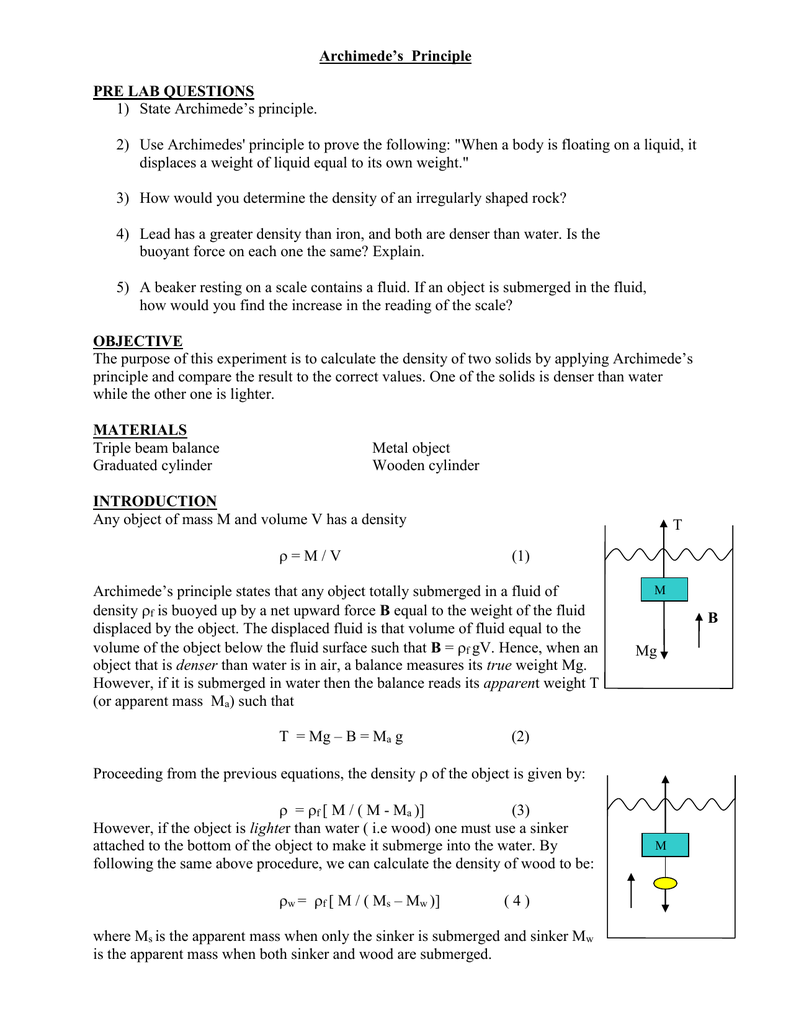
Support all your answers with evidence.Ĭopyright © 2012 Advanced Instructional Systems Inc. What are the reasons for any high discrepancy in this lab? How can it be reduced in the experiment? Conclusion Provide a clear statement if the objective of the Lab "Archimedes' Principle" is met. Was the prediction of the mass in Part 3 correct? Explain what made you make the correct/incorrect statement. Archimedes Principle: Any object, wholly or partly immersed in a fluid, is buoyed up by a force equal to the weight of the fluid displaced by the object. How would you solve the famous Archimedes' crown problem based on the knowledge of the Archimedes' Principle? Could there be any truth to the statement that it is easier to float in salty ocean water than in fresh water? Support your answer with evidence. To establish the relation between the loss in weight of a solid when fully immersed in: a.

King Hiero called upon Archimedes to find a way to see if the crown was made of pure gold or a combination of metals. What was the major reason for any type of error in this experiment? What does the apparent weight mean? King Hiero was worried that the metalist who was making him a golden crown was replacing some of the gold with another metal. Do your experimental results support Archimedes' Principle? Support your answer with evidence. The answers to the following questions need to be a part of your discussion section. Report the experimental results that you found in this lab. Discussion Start your discussion with the statement of the purpose of the lab experiment, and then provide a brief theoretical explanation about your expected results.


This measured buoyant force is compared to the theoretical value calculated using the objects volume, and Archimedes Principle. Explain the reason for any discrepancy between your predicted and experimental result. In this lab, the buoyant force on an object is measured by taking the difference between the objects weight in air, and its apparent weight in water. 5 In the Lab Report, explain the meaning of the result shown by the electronic balance.


 0 kommentar(er)
0 kommentar(er)
